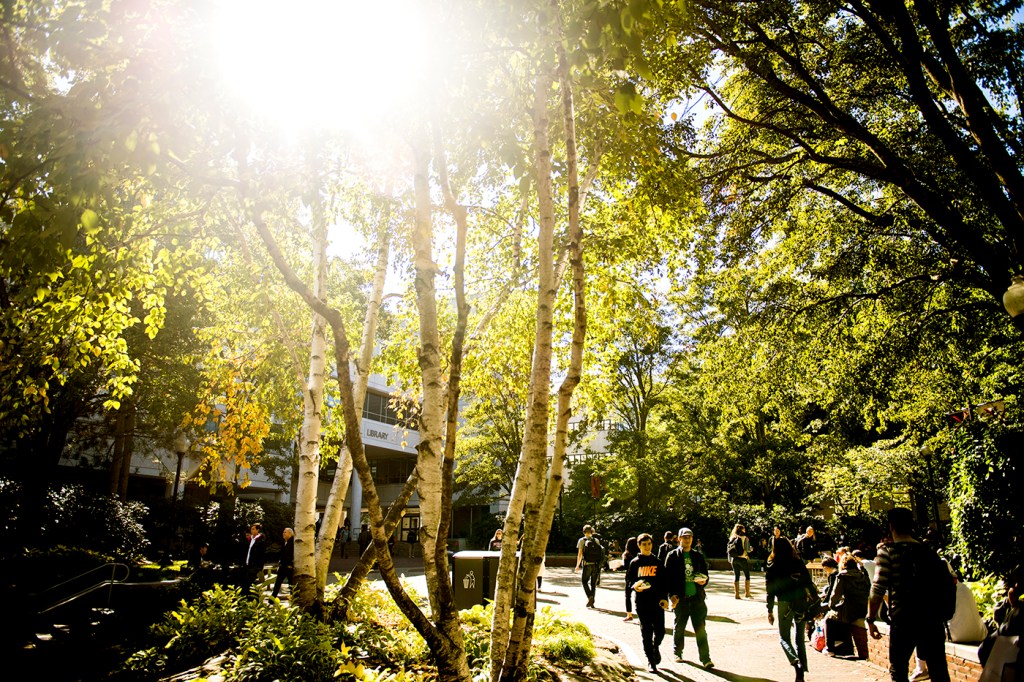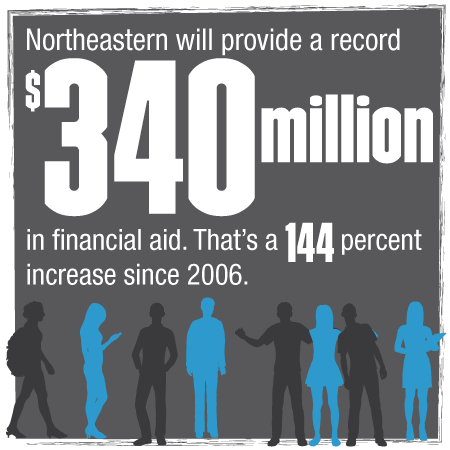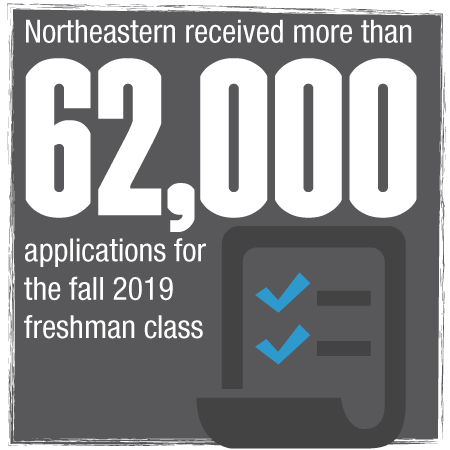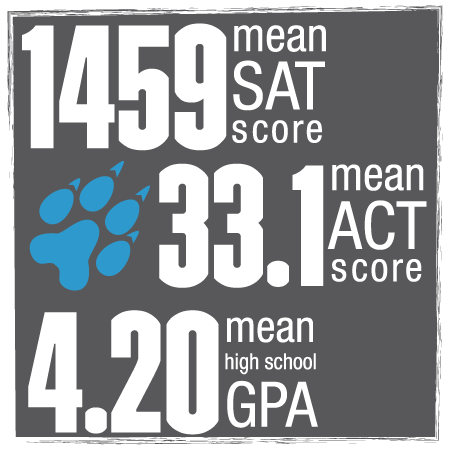Northeastern University to invest a record $340M in financial aid for students in 2019-20


.
Northeastern will provide a record $296.2 million in financial aid—not loans—for undergraduate students in 2019-20, as part of the university’s ongoing commitment to making a Northeastern education possible for high-talent students from all backgrounds.
Since 2006, Northeastern has increased its investment in financial aid by 144 percent. From 2008 to 2018, through its increased investment in aid, the university has reduced the average student loan debt among graduates by 44 percent.
Undergraduate tuition for the 2019-20 academic year will be $52,420, which represents an increase of 3.9 percent from 2018-19. Overall, tuition, fees, room, and board will increase 3.9 percent. Since 2006, Northeastern has increased its financial aid budget at a rate that is more than double the rate at which it has increased tuition, room, board, and fees.

.
Northeastern will also provide more than $43 million in financial aid for graduate students in 2019-20.
“Northeastern is fortunate to have overwhelming interest in enrollment with the university’s most selective year of undergraduate admissions on record,” said Sundar Kumarasamy, vice president for enrollment management at Northeastern. “And furthermore, with Northeastern’s investment in financial aid, we’re thrilled that this can be an affordable fit for students to pursue meaningful experiences.”
Northeastern’s record investment in financial aid comes at a time when the university is experiencing overwhelming demand from prospective students. Northeastern received more than 62,000 applications for the fall 2019 freshman class, marking the second straight year the university has received this many applications from prospective students.

.
The incoming freshman class for fall 2019 reflects Northeastern’s increased selectivity and highlights its academic achievement and diversity. The university’s acceptance rate—the percentage of applicants who are admitted—was just 18 percent, compared to 19 percent for fall 2018. Underrepresented minorities are projected to make up 21 percent of students in the fall 2019 freshman class, compared to 20 percent for fall 2018. And international students are expected to represent 11 percent of freshmen who enroll in fall 2019.
Twelve percent of students in the incoming freshman class are Hispanic, compared to 11 percent in the fall 2018 incoming freshman class, and 22 percent are Asian American, compared to 19 percent in fall 2018. Eight percent of students in Northeastern’s incoming freshman class for fall 2019 are African American, equaling the percentage for fall 2018.

.
The number of National Merit finalists expected to enroll this fall currently stands at 139, compared to 110 last year. The average SAT scores (1459), ACT scores (33.1), and high school GPA (4.20) of the expected freshman class this fall all exceed those from last year. Twenty-four percent of students in the fall 2019 freshman class will enroll in combined majors, compared to 21 percent last fall.
Northeastern will continue to meet the “full demonstrated need” of all freshmen and transfer students who are eligible for federal student aid, as determined using the financial data families provide to the College Board and on the Free Application for Federal Student Aid. More than 70 percent of first-year students at the university receive some form of grant aid from the university.
Undergraduate students will also continue to benefit from the Northeastern Promise, a compact that guarantees eight semesters of funding for students who receive need-based Northeastern grant assistance. Under the Promise, need-based grant funds will automatically increase at the same rate as tuition and are guaranteed not to decrease, regardless of any change in a family’s economic circumstances.
Northeastern also provides full-tuition scholarships to 150 Boston residents and hosts college readiness events for Boston Public Schools students and their families to help them prepare and apply for college and financial aid.

.
The rise in quality and quantity of students reflects Northeastern’s commitment to providing students with more opportunities to work, study, and conduct research around the world. The number of countries where Northeastern has placed students in experiential learning opportunities has increased by 127 percent since 2006. Students were placed in 11,188 co-op positions in 2017-2018, up from 6,301 in 2006-07. And Northeastern has more than 2,900 co-op employers in the United States and around the world.
Northeastern students also have a career edge after graduation: 93 percent of students who have graduated over the past 10 years have been employed full time or enrolled in graduate school within nine months of graduation. Ninety percent of 2017 graduates who are employed are doing work related to their majors.
Enrollment in graduate programs has increased by 23 percent in the past five years to more than 22,000 learners.
Northeastern has also hired more than 650 tenured and tenure-track faculty since 2006 and added 186 undergraduate and graduate programs of study in emerging fields since 2006.
For media inquiries, please contact media@northeastern.edu.




